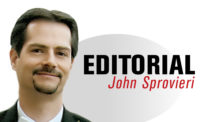Designing a medical device or consumer product can take a long time. Designing an automated assembly system for those products shouldn’t add any more. Starting with a standardized assembly platform can reduce engineering time and get the product to market faster.
That’s the thinking behind a portfolio of standardized assembly platforms offered by IMA Automation. Headquartered near Bologna, Italy, IMA specializes in automated equipment for assembling caps and closures; medical and pharmaceutical products; ink cartridges and printheads; and automotive clutches. The company has offices and production facilities around the world, including Malaysia, China and Argentina. The company’s U.S. affiliate, IMA Automation North America, is located in Loves Park, IL.
One of IMA’s standardized platforms, the EVO Flex Rotary, was developed to assemble personal care and cosmetic products; medical devices; and beverage and infusion products. The machine is comprised of a servo-driven rotary dial and servo-controlled pick-and-place mechanisms attached to a central column. Reciprocal assembly of two to five components is possible with the basic machine configuration. (For more complex assemblies, the EVO Flex can be connected to a second EVO Flex with a transfer module.)
The number of assembly stations varies depending on the size and configuration of the table. A table 800 millimeters in diameter can have eight stations in a two-up configuration or 18 in a one-up configuration. A table 1,264 millimeters in diameter can have 10 stations in a six-up configuration. A table 1,540 millimeters in diameter can have nine stations in an eight-up configuration, 12 stations in a six-up configuration, or 38 in a one-up configuration.
A unique aspect of the EVO Flex is its servo-driven pick-and-place unit, which consists of a vertical linear motor (with a 100-millimeter stroke) and a horizontal linear motor (with a 200-millimeter stroke). If the application requires rotation or tilting of components, a third motor can be supplied. Stroke, timing, speed and acceleration are controlled via software. The pick-and-place unit can carry a 15-kilogram payload.
Pick-and-place units can be positioned anywhere around the central column like the hands on a clock. The column itself can also be configured to produce up and down motion.
The table can position fixtures with a precision of ±0.025 to ±0.1 millimeter. Overall, the EVO Flex can support a rate of up to 60 cycles per minute.
Three of IMA’s platforms—Pilot Med, Rotary Med and Linear Med—were developed specifically for medical device manufacturing. Each platform forms the basis for a customized assembly line. Stations and assembly technologies are added according to specific product requirements.
The base machines comply with good manufacturing practice standards and ISO 7 clean room requirements. They can be equipped with either Rockwell or Siemens control platforms.
An entry-level system, the Pilot Med is a flexible, low-volume assembly platform for manufacturers seeking efficiency and cost-effective automation. The platform gives engineers the ability to integrate manual assembly and feeding stations with semiautomatic and fully automatic stations. Assembly equipment can be manually operated, cam-driven, pneumatic or servo-controlled.
The Pilot Med can operate at speeds identical to those required for high-volume production. It’s also fully
compatible (mechanically, electrically and in terms of software interfaces) with IMA’s high-volume platforms. As a result, when production volume increases, engineers can simply transfer process stations and tooling from the Pilot Med directly to a high-speed line. This saves time, reduces cost, and eliminates the risk associated with developing and validating a new station from scratch.
The machine is equipped with a linear pallet-transfer system that can move at up to 20 cycles per minute. The transfer system positions pallets with an accuracy of less than 30 microns.
The Pilot Med comes in single- or double-sided versions, and there are four stations per side. Multiple platforms can be connected in a master-slave configuration to create longer assembly lines. In addition, the Pilot Med can be integrated with robots or rotary indexing dials.
The Rotary Med is a flexible, rotary indexing dial chassis for high-volume assembly operations. The machine is available in four sizes: 16, 20, 24 or 28 stations. The indexing ring is driven by a single motor to keep all workstations in full synchronization. A patented fixture ring minimizes rotational inertia.
The index-to-process ratio is 90 degrees for indexes and 270 degrees for dwells. The system maintains a constant index pitch regardless of the number of stations. The indexer positions fixtures with an accuracy of less than 50 microns.
A library of standard, proven process modules have been designed for the system. A pre-bored main tooling plate allows stations to be moved easily from one position to the next.
The Linear Med is a modular indexing platform for high-volume assembly. The platform’s unique design provides easy access to fixtures from three sides. Tooling can be located both on the front and rear sides, and on either the inner or outer tooling plates.
Fixtures are accurately positioned at all times via a fully synchronized, smooth-running, cam-based indexing system. Index pitch can be 100, 200 or 400 millimeters, with cycle rates of less than 1 second. The indexer positions fixtures with an accuracy of less than 50 microns.
The reconfigurable machine is built up from 1-meter modules, allowing the chassis to be set up with two, three or four sections. The system can be equipped with 20 to 104 workstations.
Index-to-process ratios are 90-to-270 degrees, 120-to-240 degrees, 140-to-220 degrees or 180-to-180 degrees.
For more information, call 815-885-8860 or visit https://ima.it/automation. To watch a video about the EVO Flex Rotary, click www.youtube.com/watch?v=IH65_bfZpRE.







